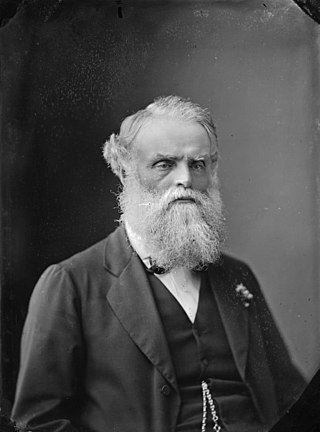
Josiah Clifton Firth was a New Zealand farmer, businessman and politician who had a brief brush with fame as the messenger between Te Kooti and the New Zealand Government during Te Kooti's War.

All Saints’ Church is an heritage-listed Anglican church located on the corner of Cook Street and Selwyn Road in the suburb of Howick, in Manukau City on the North Island of New Zealand. The church was the first parish church in Auckland and is the oldest building in Manukau.
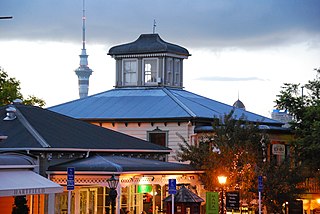
Parnell is a suburb of Auckland, New Zealand. It is one of New Zealand's most affluent suburbs, consistently ranked within the top three wealthiest, and is often billed as Auckland's "oldest suburb" since it dates from the earliest days of the European settlement of Auckland in 1841. It is characterised by its mix of tree-lined streets with large estates; redeveloped industrial zones with Edwardian town houses and 1920s bay villas; and its hilly topography that allows for views of the port, the Waitematā Harbour, Rangitoto Island and the Auckland Domain. To its west lies the Auckland Domain, to the south Newmarket, and to the north the Ports of Auckland.

Holy Trinity Cathedral is an Anglican cathedral situated in Parnell, a residential suburb of Auckland, New Zealand. It is the 'mother church' of the Anglican Diocese of Auckland and the seat of the Bishop of Auckland. The current main church building was consecrated in 1973.

George Augustus Selwyn was the first Anglican Bishop of New Zealand. He was Bishop of New Zealand from 1841 to 1869. His diocese was then subdivided and Selwyn was Metropolitan of New Zealand from 1858 to 1868. Returning to Britain, Selwyn served as Bishop of Lichfield from 1868 to 1878.

St Matthew's-in-the-City Church, sometimes abbreviated as St Matthew's, or commonly known as St Matthew-in-the-City, is an historic Anglican church located at 132-134 Hobson Street in the central business district of Auckland, in the North Island of New Zealand. Part of the Anglican Church in Aotearoa, New Zealand and Polynesia and the Diocese of Auckland, the church was completed in 1905 and is renowned for its Gothic Revival style.

Te Waimate Mission was the fourth mission station established in New Zealand and the first settlement inland from the Bay of Islands. The members of the Church Missionary Society (CMS) appointed to establish Te (the) Waimate Mission at Waimate North were the Rev. William Yate and lay members Richard Davis, George Clarke and James Hamlin.

William Garden Cowie was bishop of the Anglican Diocese of Auckland, New Zealand, from 1870 to 1902. Although he succeeded George Selwyn in having jurisdiction in this portion of New Zealand, he was the first bishop to be known specifically as Bishop of Auckland. His wife Eliza Jane Cowie (1835-1902) was a distinguished religious worker in her own right, and Bishop Cowie's journals refer frequently to her work with him.

The Reverend Frederick Thatcher was an English and New Zealand architect and clergyman.

Reader Gillson Wood was a 19th-century New Zealand politician. An architect by trade, he designed the 1854 General Assembly House built as New Zealand's first meeting house for the House of Representatives.

Alfred Nesbit Brown was a member of the Church Missionary Society (CMS) and one of a number of missionaries who travelled to New Zealand in the early 19th century to bring Christianity to the Māori people.
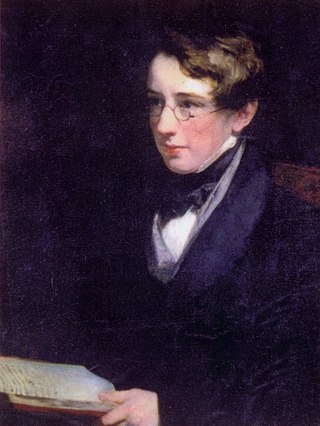
Rev William Charles Cotton was an Anglican priest, a missionary and an apiarist. After education at Eton College and Christ Church, Oxford he was ordained and travelled to New Zealand as chaplain to George Augustus Selwyn, its first bishop. He introduced the skills of beekeeping to North Island and wrote books on the subject. Later as vicar of Frodsham, Cheshire, England, he restored its church and vicarage but was limited in his activities by mental illness.
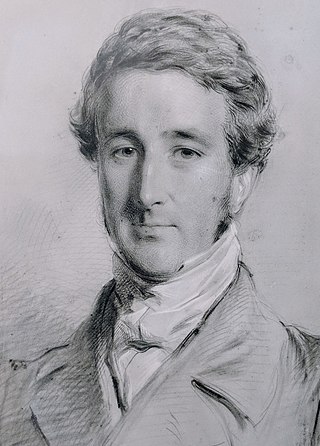
Charles John Abraham was the first Anglican Bishop of Wellington. He married Caroline Palmer who became a noted artist.

William Thorne Buckland was a 19th-century Member of Parliament in New Zealand.

Kinder House is a historic house on Ayr Street, in the suburb of Parnell, Auckland, New Zealand.

Holy Trinity Church is a heritage-listed Anglican building at 12 Henui Street, Fitzroy, New Plymouth, New Zealand.

The Taranaki Cathedral Church of St Mary is an Anglican cathedral church, located at 37 Vivian Street, New Plymouth, in New Zealand. Following the 2011 Christchurch earthquake, in 2016 the cathedral was closed for repairs.

The Selwyn churches were a group of 19th-century Anglican churches and chapels in the Auckland region, New Zealand, named after Bishop Selwyn, who inspired their construction. The majority were built in wood in the neo-gothic style, and many were designed by the architect Frederick Thatcher.

Sarah Harriet Selwyn was the wife of George Augustus Selwyn, the first Anglican bishop of New Zealand and later of Lichfield. Often left behind to manage missionary stations while her husband travelled throughout New Zealand and the islands of the western Pacific Ocean, Sarah Selwyn contributed to the work of building the hierarchy of the Church of England in New Zealand from 1841 to 1868.
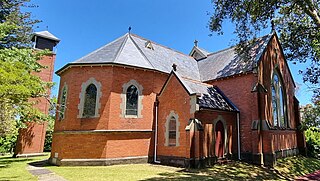
St Barnabas' Anglican Church is a Selwyn church located in the Auckland suburb of Mt Eden. It is the fourth oldest Anglican church in Auckland, originally erected in 1847 then reestablished on its current Mt Eden site in 1877. St Barnabas is part of the Diocese of Auckland and the current Vicar is Scott Malcom.





















